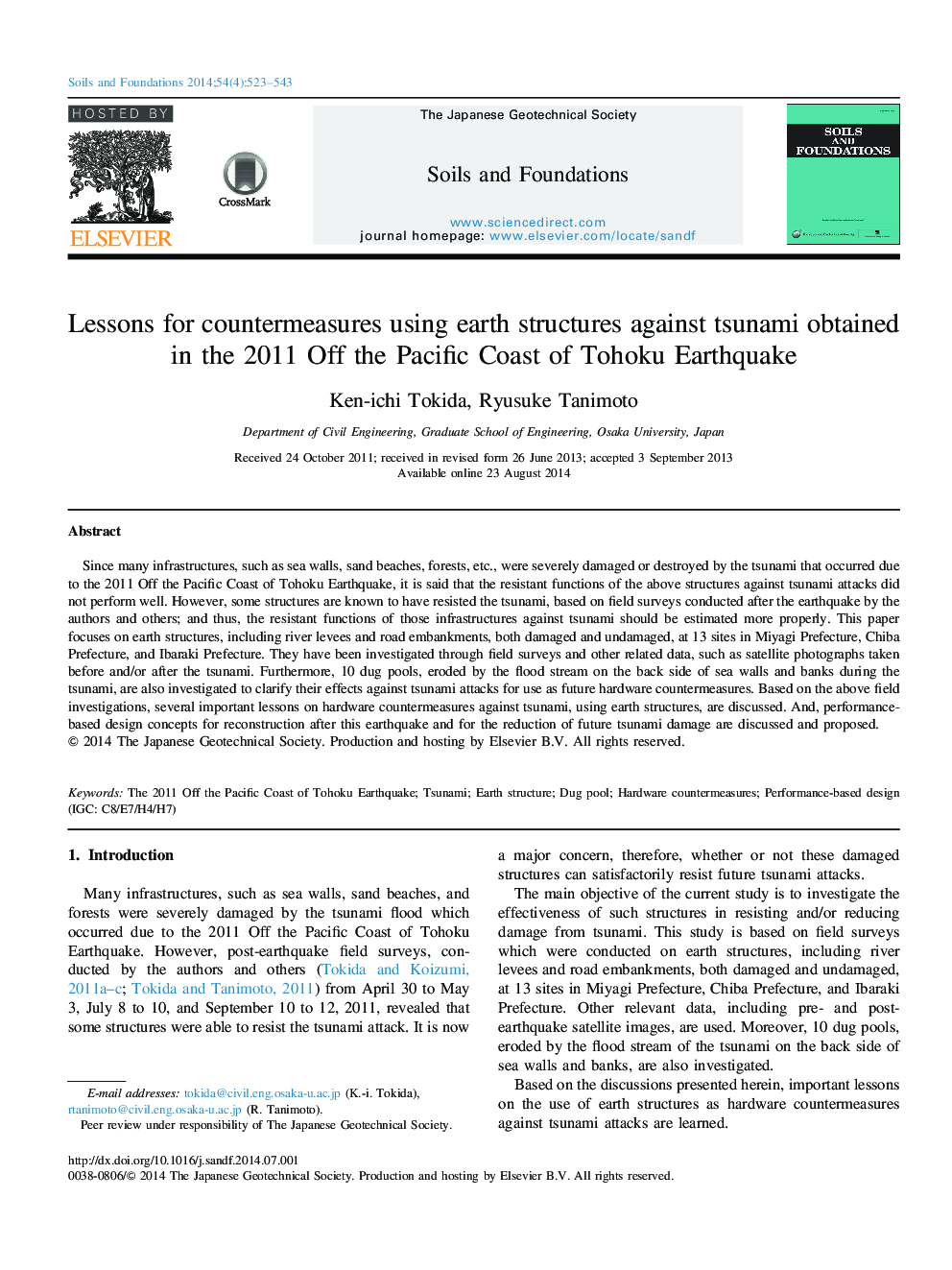| Article ID | Journal | Published Year | Pages | File Type |
|---|---|---|---|---|
| 307235 | Soils and Foundations | 2014 | 21 Pages |
Since many infrastructures, such as sea walls, sand beaches, forests, etc., were severely damaged or destroyed by the tsunami that occurred due to the 2011 Off the Pacific Coast of Tohoku Earthquake, it is said that the resistant functions of the above structures against tsunami attacks did not perform well. However, some structures are known to have resisted the tsunami, based on field surveys conducted after the earthquake by the authors and others; and thus, the resistant functions of those infrastructures against tsunami should be estimated more properly. This paper focuses on earth structures, including river levees and road embankments, both damaged and undamaged, at 13 sites in Miyagi Prefecture, Chiba Prefecture, and Ibaraki Prefecture. They have been investigated through field surveys and other related data, such as satellite photographs taken before and/or after the tsunami. Furthermore, 10 dug pools, eroded by the flood stream on the back side of sea walls and banks during the tsunami, are also investigated to clarify their effects against tsunami attacks for use as future hardware countermeasures. Based on the above field investigations, several important lessons on hardware countermeasures against tsunami, using earth structures, are discussed. And, performance-based design concepts for reconstruction after this earthquake and for the reduction of future tsunami damage are discussed and proposed.
